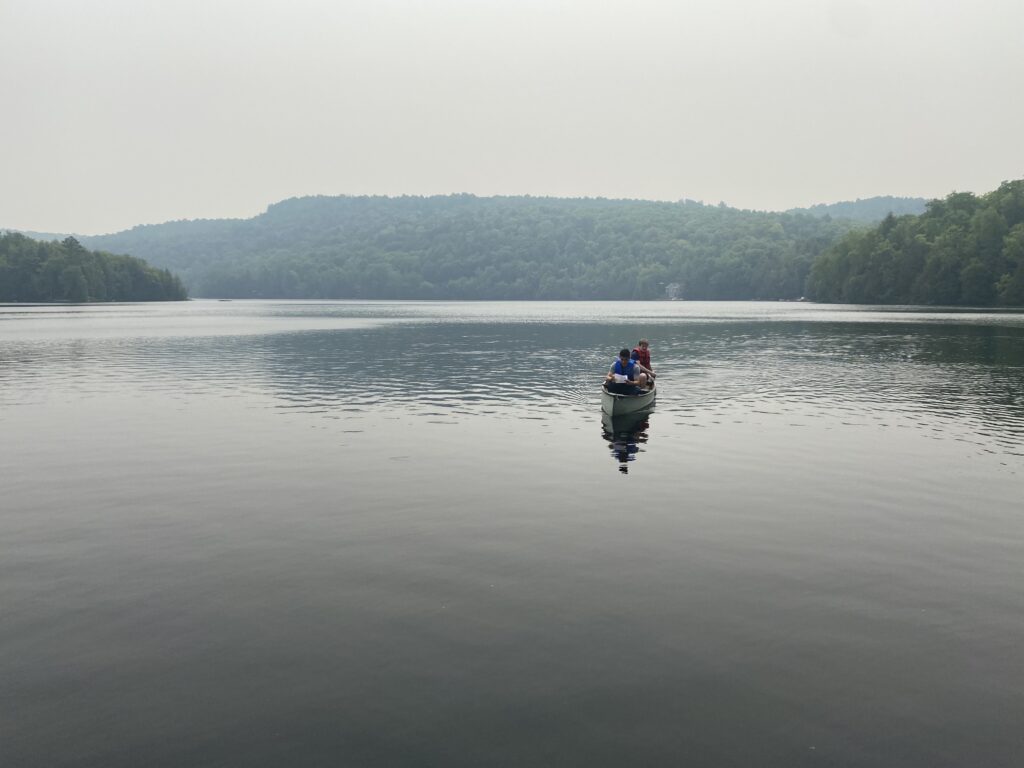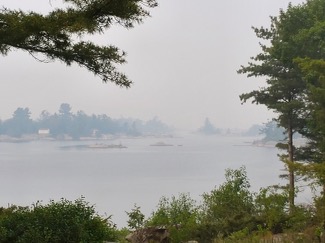Something’s in the air
The impact of wildfire smoke on water quality
Canada’s 2023 wildfire season is now the worst ever recorded, with the area burned this year to date, totalling more than 7,974,865 hectares (Canada’s 10 year average is 499,474). We’ve seen the devastating impacts of intense wildfires across Canada. Canada is not the only country experiencing intense and prolonged wildfires. Areas in the US such as California, as well Australia, South Africa, and the Amazon are also impacted by intense wildfires.
Even if you are not in an area that’s currently burning, you may have noticed the poor air quality or the constant haziness of the sky. While it’s easy to imagine the detrimental effects of fires on forests, wildlife, land habitats, and infrastructure, the effects of wildfires on water quality often go unnoticed.

Smoke from wildfires seen at our headquarters in Val-des-Monts, QC.
Impact of wildfires on water quality
If you’ve noticed changes in your water quality readings over the last few weeks, you’re not the only one! In areas that are actively burning, alkaline ash products and other contaminants associated with forest fires settle on or runoff into nearby waterways. The alkaline ash product can increase your alkalinity readings, as the material settles on the water or gets carried downstream. However, that’s not the only parameter smoke from the wildfires is affecting.
Active burn areas can be more prone to erosion which increases downstream accumulation of sediments. Waterways can also become overloaded with nutrients, dissolved organic carbon, major ions, and metals (Walkerton Clean Water Centre). The increase of nutrients, such as dissolved organic carbon, phosphates, and nitrates associated with wildfires is concerning. One outcome in nutrient overloads in waterways their potential to aid in the overgrowth of algal blooms.
When it comes to increased nutrient loads in our waterways, of most concern is the impact of these out-of-balance loads helping to create conditions favourable to the development of Harmful Algal Blooms (HABS). HABS are harmful to both humans and the environment, and can majorly deplete dissolved oxygen levels which are vital to the survival of all aquatic life. When there is an overgrowth of cyanobacteria (also know as blue green algae) they can form a HAB. In warm, nutrient-rich environments, cyanobacteria can multiply quickly. When these bacteria multiply quickly, they form what are known as blooms. Moreover, they can be toxic. When these blooms become toxic they can severely impact the drinking as well as recreational water quality for humans, aquatic life, and any animals using the water as a drinking or food source.
Cladophora, non-toxic “nuisance” algae, is another algae that benefits from increase nutrients in the water. This stringy green algae that washed up in smelly mats on our shorelines earned the name “nuisance algae” due to its increasing presence and impact on freshwater ecosystems in the Great Lakes.
Go out and test!
Many poor air quality warnings have been issued over the previous month. While it’s important to test so we can better understand the impacts wildfires are having on our water bodies, safety is our top priority. If you’re in a low risk area, we encourage you to test as often as possible.
Wildfires have the potential to impact water quality during active burning and anywhere from months to years after fires have been contained. Researchers are still learning about the impacts increased wildfires will have on water quality. That’s why water monitoring is so vital, especially as we begin to see more extreme fires associated with climate change.

Smoke in Pointe au Baril, in northern Ontario.
Feeling out of control?
It’s easy to feel like the wildfires are out of our control (literally!), but there are many ways in which we can contribute to mitigation efforts and research on their impacts! By continuing to monitor the health of our water bodies we are building connections that facilitate environmental stewardship. Small actions by many people go a long way!
Helpful links
Canada’s National Wildland Fire Situation Report
Walkerton Clean Water Centre’s Impact of Wildfires on Drinking Water Sources